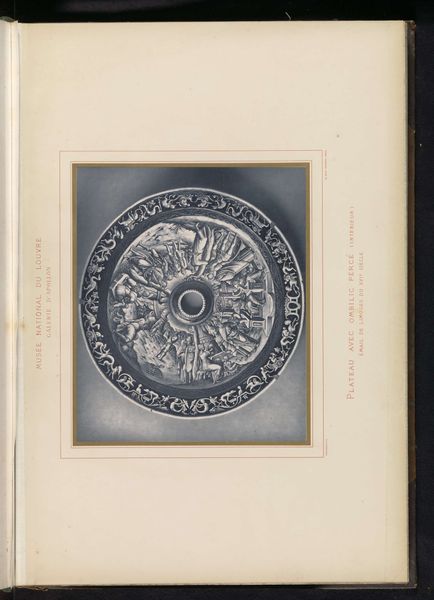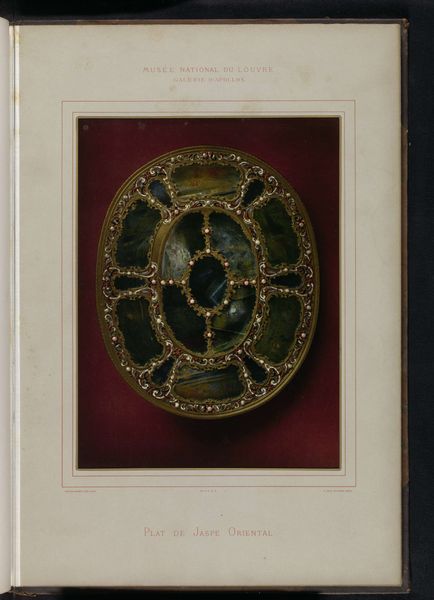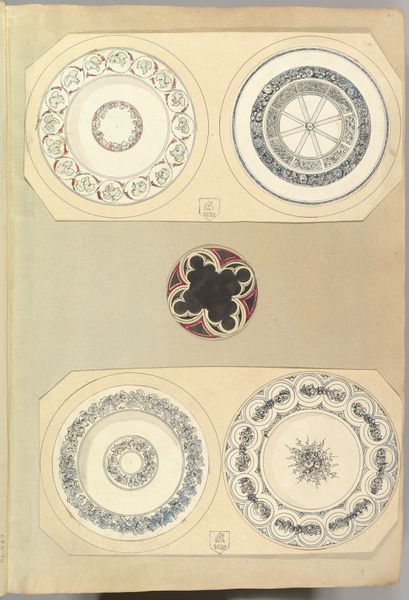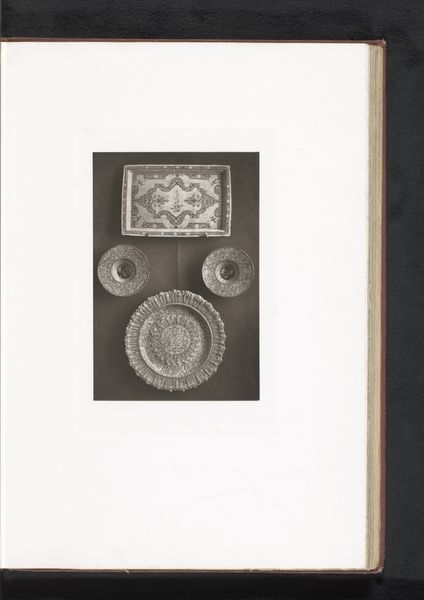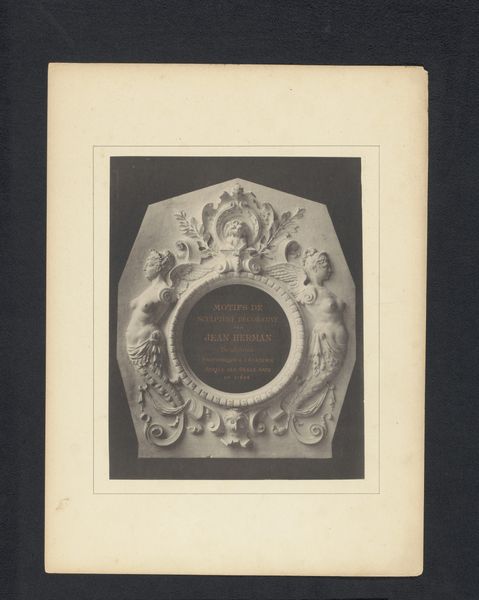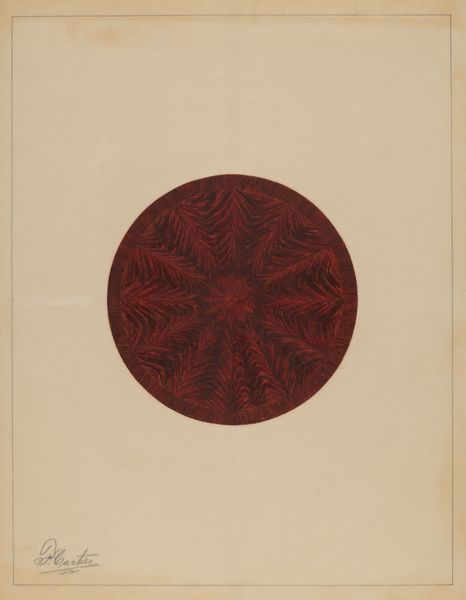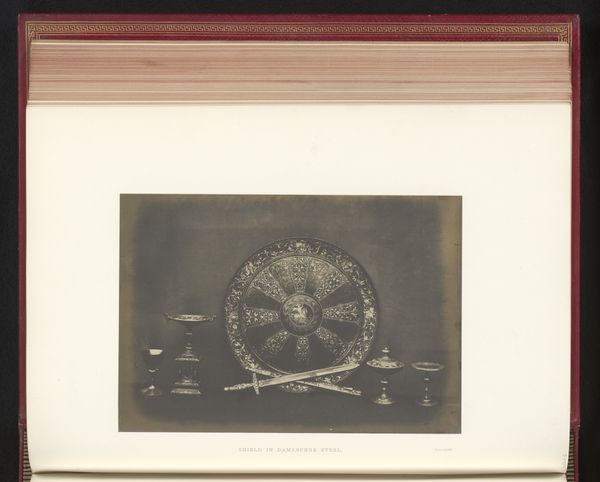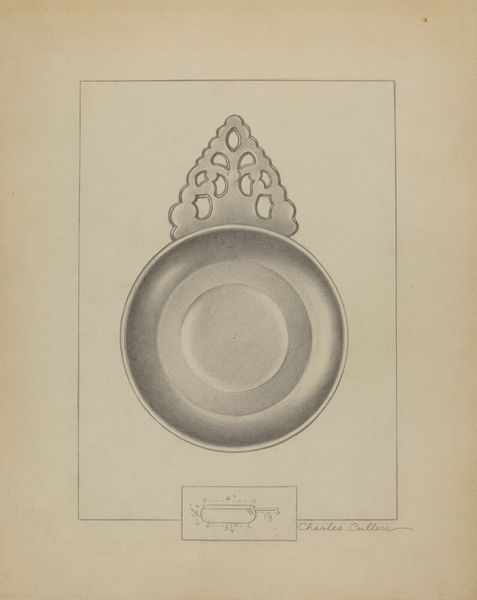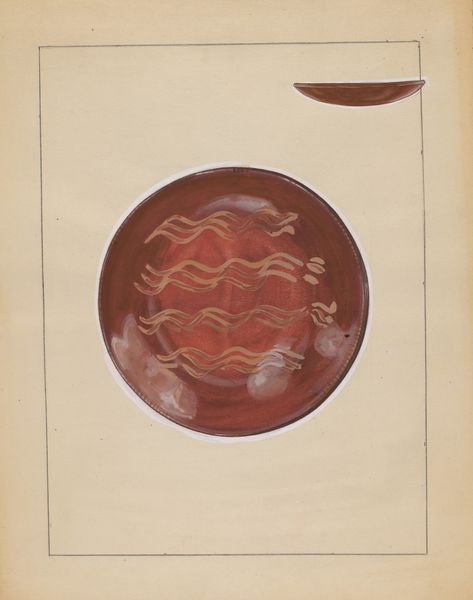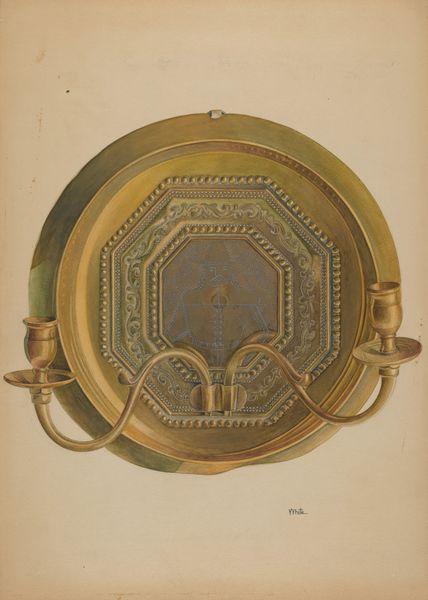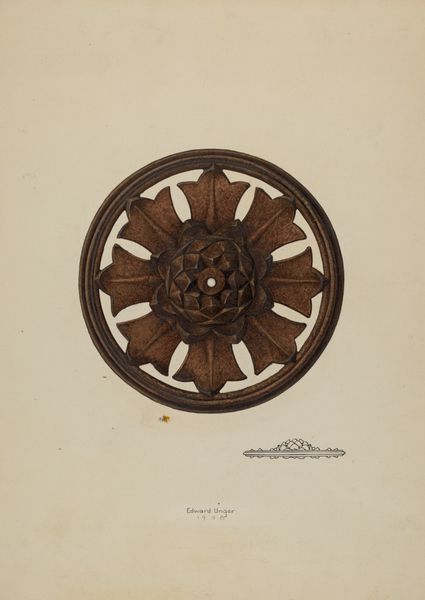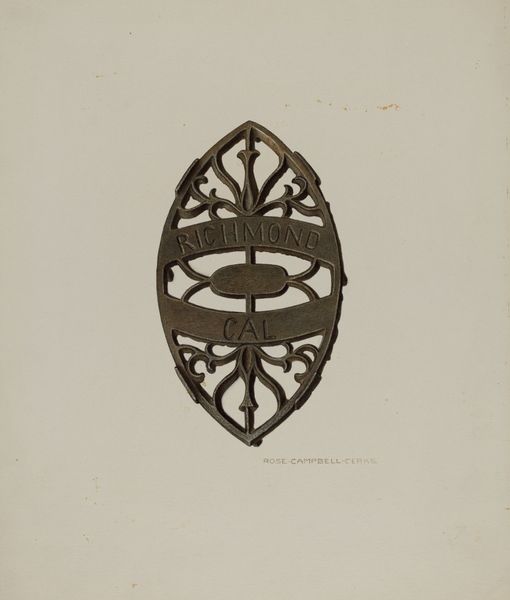
Ronde schotel met in het midden een gat, door Pierre Raymond gedecoreerd met hoofden en cherubijnen c. 1876 - 1883
0:00
0:00
ceramic
#
ceramic
#
stoneware
#
islamic-art
#
decorative-art
#
decorative art
Dimensions: height 316 mm, width 242 mm
Copyright: Rijks Museum: Open Domain
This enameled round dish, decorated by Pierre Raymond, features heads and cherubim. These cherubs, infantile faces framed by wings, echo the ancient concept of Eros, the god of love and desire, a motif that has fluttered through art history. Consider the cherub's journey: from pagan symbol to Christian angel, a transformation reflecting humanity's evolving spiritual landscape. This winged figure reemerges in the Renaissance, a rediscovery of classical ideals intertwined with Christian faith. Here, they signify divine love and innocence, yet their presence also hints at the undercurrents of human longing and the complex interplay between the sacred and profane. Such images evoke a deep, often subconscious, emotional response. The cherub’s enduring appeal speaks to our innate desire for connection, protection, and perhaps, a touch of the divine, forever captured in this cyclical dance of cultural memory.
Comments
No comments
Be the first to comment and join the conversation on the ultimate creative platform.
